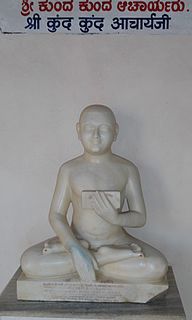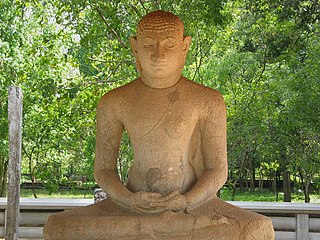 W
WAhinsā in Jainism is a fundamental principle forming the cornerstone of its ethics and doctrine. Ahinsa was included as a fundamental principle by the 24th and last tirthankar of Jainism, Lord Mahavir and was not included by earlier tirthankars of Jainism. The term ahinsa means nonviolence, non-injury and absence of desire to harm any life forms. Vegetarianism and other nonviolent practices and rituals of Jains flow from the principle of ahimsa. There are five specific transgressions of Ahinsa principle in Jain scriptures - Binding of animals, beating, mutilating limbs, overloading, withholding food and drink. Any other interpretation is subject to individual choices and not authorized by scriptures. The Jain concept of ahimsa is very different from the concept of nonviolence found in other philosophies. Violence is usually associated with causing harm to others. But according to the Jain philosophy, violence refers primarily to injuring one's own self – behaviour which inhibits the soul's own ability to attain moksha. At the same time it also implies violence to others because it is this tendency to harm others that ultimately harms one's own soul. Furthermore, the Jains extend the concept of ahimsa not only to humans but to all animals, plants, micro-organisms and all beings having life or life potential. All life is sacred and everything has a right to live fearlessly to its maximum potential. Living beings need not fear those who have taken the vow of ahimsa. According to Jainism, protection of life, also known as abhayadānam, is the supreme charity that a person can make. The often quoted text Ahinsa parmo dharma is immediately succeeded by the quote Dharm Hinsa Tathaiv Cha. This means that Non Violence is the supreme form of religion but to protect one's religion, even if it requires violence, is the superior form of religion but should be practiced as exception. Ahimsa does not merely indicate absence of physical violence, but also indicates absence of desire to indulge in any sort of violence. Jains have strongly advocated vegetarianism and nonviolence throughout the ages.
 W
WAnandghan was a 17th-century Jain monk, mystical poet and hymnist. Though very little is known about his life, his collection of hymns about philosophy, devotion and spirituality in vernacular languages are popular and still sung in Jain temples.
 W
WJainism made its own unique contribution to this mainstream development of philosophy by occupying itself with the basic epistemological issues. According to Jains, knowledge is the essence of the soul. This knowledge is masked by the karmic particles. As the soul obtains knowledge through various means, it does not generate anything new. It only shreds off the knowledge-obscuring karmic particles. According to Jainism, consciousness is a primary attribute of Jīva (soul) and this consciousness manifests itself as darsana (perception) and jnana (knowledge).
 W
WKayotsarga is a yogic posture which is an important part of the Jain meditation. It literally means "dismissing the body". A tirthankara is represented either seated in yoga posture or standing in the kayotsarga posture. Kayotsarga means "to give up one's physical comfort and body movements", thus staying steady, either in a standing or other posture, and concentrating upon the true nature of the soul. It is one of the six essentials (avasyaka) of a Jain ascetic and one of the 28 primary attributes of a Digambara monk
 W
WKundakunda was a Digambara Jain monk and philosopher, who likely lived in the 2nd CE century CE or later.
 W
WJain meditation (dhyāna) has been the central practice of spirituality in Jainism along with the Three Jewels. Jainism holds that emancipation can only be achieved through meditation or Shukla Dhyana. According to Sagarmal Jain, it aims to reach and remain in a state of "pure-self awareness or knowership." Meditation is also seen as realizing the self, taking the soul to complete freedom, beyond any craving, aversion and/or attachment. The practitioner strives to be just a knower-seer (Gyata-Drashta). Jain meditation can be broadly categorized to the auspicious and inauspicious. The 20th century saw the development and spread of new modernist forms of Jain Dhyana, mainly by monks and laypersons of Śvētāmbara Jainism.
 W
WThe Pañca-Parameṣṭhi in Jainism are a fivefold hierarchy of religious authorities worthy of veneration.
 W
WParasparopagraho Jīvānām (Sanskrit) is a Jain aphorism from the Tattvārtha Sūtra [5.21]. It is translated as "Souls render service to one another". It is also translated as, "All life is bound together by mutual support and interdependence." These translations are virtually the same, because Jains believe that every living being, from a plant or a bacterium to human, has a soul and the concept forms the very basis of Jainism.
 W
WShrimad Rajchandra was a Jain poet, mystic, philosopher, scholar and reformer. Born in Vavaniya, a village near Morbi, he claimed to have recollection of his past lives at the age of seven. He performed Avadhāna, a memory retention and recollection test that gained him popularity, but he later discouraged it in favour of his spiritual pursuits. He wrote much philosophical poetry including Atma Siddhi. He also wrote many letters and commentaries and translated some religious texts. He is best known for his teachings on Jainism and his spiritual guidance to Mahatma Gandhi.
 W
WSamadhi, in Hinduism, Jainism, Buddhism, Sikhism and yogic schools, is a state of meditative consciousness. In the yogic traditions, and the Buddhist commentarial tradition on which the Burmese Vipassana movement and the Thai Forest tradition rely, it is a meditative absorption or trance, attained by the practice of dhyāna. In the oldest Buddhist suttas, on which several contemporary western Theravada teachers rely, it refers to the development of a luminous mind which is equanimous and mindful.
 W
WTiryancha is the term used for plants and animals in Jain philosophy.
 W
WYashovijaya, a seventeenth-century Jain philosopher-monk, was a notable Indian philosopher and logician. He was a thinker, prolific writer and commentator who had a strong and lasting influence on Jainism. He was a disciple of Muni Nayavijaya in the lineage of Jain monk Hiravijaya who influenced the Mughal Emperor Akbar to give up eating meat. He is also known as Yashovijayji with honorifics like Mahopadhyaya or Upadhyaya or Gani.